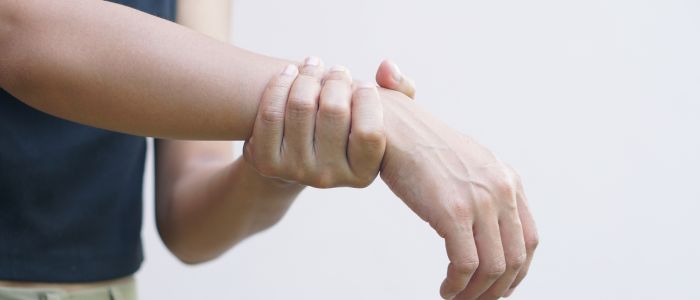
Table of Contents
- How to Manage Nerve Damage and Effective Treatments for Lacerations
- What Is Nerve Damage?
- Symptoms of Nerve Lacerations
- Long-Term Effects
- Diagnosing Nerve Damage
- Surgical Options for Nerve Repair
- Direct Nerve Repair (Neurorrhaphy)
- Nerve Grafting
- Rehabilitation and Recovery Processes
- Short-Term Recovery
- Long-Term Rehabilitation
- How Much are Nerve Laceration Treatments in the UK?
- Surgical Treatment Costs
- Non-Surgical Treatment Costs
- Insurance and Additional Financial Support
- FAQs about Treatment for Nerve Lacerations and Trauma
- Further Reading about Procedures at Cheshire Cosmetic Surgery
How to Manage Nerve Damage and Effective Treatments for Lacerations
Suffering from nerve damage can be an extremely challenging ordeal, impacting daily activities and overall quality of life. Whether caused by a traumatic injury, surgery, or an underlying condition, nerve lacerations can lead to debilitating symptoms such as numbness, tingling, weakness, or even paralysis. Seeking prompt medical attention and exploring effective nerve laceration treatment options is crucial for minimising long-term consequences and optimising your recovery process.
What Is Nerve Damage?
Nerve injuries are categorised into three main types: neuropraxia, axonotmesis, and neurotmesis. Neuropraxia involves a temporary loss of nerve function without damage to the nerve itself. Axonotmesis refers to more severe damage involving the axons while the nerve’s protective cover remains intact. Neurotmesis, the most severe form, involves a complete severance or disruption of the nerve.
Nerve lacerations are usually caused by accidents such as cuts from glass or machinery, or through traumatic incidents including falls or vehicle accidents. Medical procedures can also lead to nerve damage inadvertently, especially complex surgeries where nerves may be in close proximity to the surgical site.
Symptoms of Nerve Lacerations
If you suffer from a nerve laceration, you might experience pain, numbness, or muscle weakness in the affected area. These symptoms occur due to the nerve’s impaired ability to send sensory and motor signals.
Long-Term Effects
Chronic pain and loss of function can persist if nerve damage is severe, sometimes leading to disability. The extent of the damage and the effectiveness of the initial treatment play crucial roles in determining the long-term impact.
Diagnosing Nerve Damage
To accurately diagnose nerve damage, various imaging techniques such as MRI or ultrasound may be used. These help in visualising the extent and location of the nerve injury.
Electromyography (EMG) and Nerve Conduction Velocity (NCV) are tests used to assess the electrical activity in muscles and the speed of conduction of nerve signals, respectively. These tests are crucial in diagnosing the type of nerve injury and in planning out treatment options.
Surgical Options for Nerve Repair
When dealing with nerve lacerations and trauma, surgical intervention often becomes necessary to restore function and alleviate symptoms. Below, we discuss the primary surgical methods employed:
Direct Nerve Repair (Neurorrhaphy)
Direct nerve repair, also known as neurorrhaphy, is the surgical reconnection of the severed ends of a nerve. This procedure is feasible and usually recommended when the distance between the cut ends of the nerve is minimal, allowing for a direct repair. Anca delicately sutures the epineurium, which is the outermost layer of the nerve, to align the nerve fibres as closely as possible. This alignment is crucial as it facilitates the regrowth of nerve fibres across the repair site.
This technique aims to create a conducive environment for nerve regeneration, hoping to re-establish nerve function over time. Recovery and the extent of functional restoration depend on several factors, including the age of the patient, the type of nerve, and the location of the injury. Post-operative care is critical and involves physical therapy to enhance recovery and prevent complications such as joint stiffness or muscle atrophy.
Nerve Grafting
Nerve grafting is a more complex procedure used when there is a significant gap between the severed nerve ends that cannot be directly reconnected without tension. Tension on nerve repairs can lead to poor healing outcomes and scar formation, which can block nerve regeneration. In a nerve grafting procedure, a segment of donor nerve (often taken from a less critical area in the patient’s own body, such as the sural nerve in the calf) is used to bridge the gap between the ends of the damaged nerve.
The graft works by providing a scaffold for nerve growth from the proximal to the distal stump, facilitating the regeneration process. The success of nerve grafting largely depends on the careful alignment of the nerve fibres and the health of the nerve tissue at the repair site. Like direct nerve repair, the prognosis after nerve grafting is influenced by your overall health, the extent of the injury and the precision of the surgical technique.
Rehabilitation after nerve grafting is extensive and can include several months to years of physical therapy to maximise outcomes and reduce the risk of secondary complications. The ultimate goal of nerve grafting, like all nerve repair surgeries, is to restore as much function as possible and improve the quality of life for the patient.
Both of these surgical techniques require skilled execution and meticulous post-operative care to achieve the best possible outcomes. They represent important options in the management of severe nerve injuries, providing hope and improved functionality to many who suffer from these challenging conditions.
Rehabilitation and Recovery Processes
Rehabilitation and recovery are critical components of the treatment process for nerve lacerations. These stages are designed to help you regain function and return to your daily activities as smoothly and efficiently as possible.
Short-Term Recovery
The initial phase of recovery right after treatment—whether surgical or non-surgical—focuses on managing pain, preventing infection, and ensuring the best possible conditions for healing. Here are some key aspects of short-term recovery:
- Pain Management: Immediately following treatment, you might experience pain at the site of the injury or surgery. Effective pain management is crucial and may involve medications such as analgesics or anti-inflammatory drugs. Anca will tailor your pain management regimen to suit your specific needs to ensure that you are comfortable and pain is effectively controlled.
- Wound Care: If surgery was performed, proper care of the surgical site is essential to prevent infection and promote healing. This might include regular dressing changes, keeping the area clean and dry, and monitoring for any signs of infection such as redness, swelling, or discharge.
- Physical Therapy: Early intervention with physical therapy is often critical to prevent complications such as muscle stiffness and joint immobility. A physiotherapist may start with gentle, guided exercises to gradually improve range of motion and prevent contractures.
- Education: Part of early recovery also involves education about your condition and how to best support your healing process. This includes learning how to perform daily tasks safely, understanding your limitations, and knowing when to seek further medical advice.
Long-Term Rehabilitation
Long-term rehabilitation focuses on restoring as much function as possible and integrating back into your normal life. This phase can vary greatly in length, depending on the severity of the nerve damage and your progress. Components include:
- Ongoing Physical Therapy: As recovery progresses, physical therapy will become more intensive. Exercises will be aimed at strengthening muscles, improving coordination, and increasing flexibility. Over time, the goal is to rebuild your strength and endurance to pre-injury levels.
- Occupational Therapy: If significant nerve damage has occurred, particularly in the hands or arms, occupational therapy may be necessary. This type of therapy helps you relearn how to perform daily tasks such as writing, tying shoes, or using kitchen utensils. Occupational therapists often use adaptive tools and techniques to help you maintain independence.
- Neurological Rehabilitation: For severe injuries, rehabilitation might also include neurological therapies aimed at improving nerve function. Techniques such as electrical nerve stimulation or mirror therapy can be used to stimulate nerve growth and function.
- Psychological Support: Recovering from a nerve injury can be a long and challenging process that can affect your mental health. Support from a psychologist or counsellor can be beneficial to help you cope with the frustrations and emotional challenges associated with long-term recovery. Group therapy or joining support groups where you can meet others with similar experiences can also provide emotional support.
- Regular Assessments: Throughout the rehabilitation process, regular assessments by your healthcare team will help monitor your progress and adjust your treatment plan as needed. These check-ups are important to ensure that you are on the best path to recovery and to manage any complications that may arise.
Rehabilitation after nerve laceration treatments is a process that requires patience, persistence, and a dedicated multidisciplinary team. The ultimate goal is to help you regain function and quality of life. With the right support and interventions, many patients can achieve good outcomes and lead full, productive lives post-injury.
How Much are Nerve Laceration Treatments in the UK?
The cost of nerve laceration treatments can be substantial and varies significantly depending on several factors including the type of treatment, the severity of the injury, geographical location, and the duration of required rehabilitation. Here are some considerations to help you estimate the costs associated with these medical procedures.
Surgical Treatment Costs
- Direct Nerve Repair (Neurorrhaphy) and Nerve Grafting
- Surgeon’s Fees: Typically ranges from £1,500 to £8,000, depending on the complexity of the operation and the surgeon’s expertise
- Hospital Charges: Depending on the length of stay, which could range from one day to several days, hospital costs can vary from £2,500 to over £10,000
- Anaesthesia: Costs for anaesthesia can range between £500 and £1,200
- Medical Supplies and Equipment: This can include anything from surgical tools to the nerve grafts themselves, potentially adding thousands of pounds to the overall expenses
Non-Surgical Treatment Costs
- Medications: Ongoing medications for pain and inflammation management might cost between £20 to £100 per month
- Physical Therapy: Sessions might range from £50 to £100 each, with total costs heavily dependent on the frequency and duration of treatment
Insurance and Additional Financial Support
Most patients will have some form of health insurance that may cover a significant portion of these costs, though deductibles, copayments, and coverage limits will play a crucial role in determining out-of-pocket expenses. Additionally, patients in the UK can sometimes receive support from NHS-funded treatments or disability allowances which might cover much of the direct medical costs.
FAQs about Treatment for Nerve Lacerations and Trauma

What are the risks associated with nerve repair surgeries?
Nerve repair surgeries, like all medical procedures, come with potential risks. These include infection, bleeding, and adverse reactions to anaesthesia. Specific to nerve surgeries, there is also the risk of further nerve damage during the procedure, scar tissue formation that can impede nerve function, and the possibility that the surgery will not fully restore the original level of function. It’s important to discuss these risks in detail with Anca prior to the operation to fully understand the potential complications and how they are handled.
How long does it take to recover from nerve repair surgery?
The recovery time following nerve repair surgery can vary widely depending on the type and severity of the nerve injury, the specific type of surgery performed, and the individual’s overall health. Generally, initial healing from the surgery may take several weeks, during which physical activity is limited. Complete nerve regeneration can take months or even years, and some patients may continue to see improvements for up to several years post-surgery.
Can nerve surgery restore complete function?
While nerve repair surgeries aim to restore as much function as possible, complete restoration of nerve function is not always achievable. The outcome depends on many factors including the type of nerve damage, how quickly the surgery was performed after the injury your overall health and compliance with rehabilitation recommendations. In many cases, patients experience significant improvement, but some residual effects of the nerve damage may remain.
Are there any alternative treatments if I prefer to avoid surgery?
Yes, there are alternative treatments available that can help manage symptoms caused by nerve damage and improve quality of life. These include physical therapy to strengthen muscles and maintain joint function, pain management techniques ranging from medications to nerve blocks, and occupational therapy to help with daily tasks. Additionally, emerging treatments such as stem cell therapy and electrical stimulation are showing promise in aiding nerve regeneration.
What can I do to improve my outcomes after nerve repair surgery?
Post-surgical rehabilitation is crucial to improve your chances of a good outcome. Following your surgeon and physical therapist’s instructions carefully, attending all scheduled therapy sessions, and doing prescribed exercises at home are vital. Keeping a positive attitude and regular follow-up appointments with your healthcare team can also significantly impact your recovery. Moreover, maintaining a healthy lifestyle with balanced nutrition and avoiding smoking can facilitate better healing and potentially speed up the recovery process.
Further Reading about Procedures at Cheshire Cosmetic Surgery
- Read more about Hand Trauma Surgery
- Read more about Hand Surgery
- Read more about Skin Graft Surger
- Read more about Scar Revision Surgery
- Read more about Skin Surgery
- Read more about Treatments and Solutions for Lines & Wrinkles
- Read more about Treatments and Solutions for Excess Fat
- Read more about Treatments and Solutions for Vaginal Dryness
- Read more about Treatments and Solutions for Skin Moles
- Read more about Treatments and Solutions for Thin Lips








